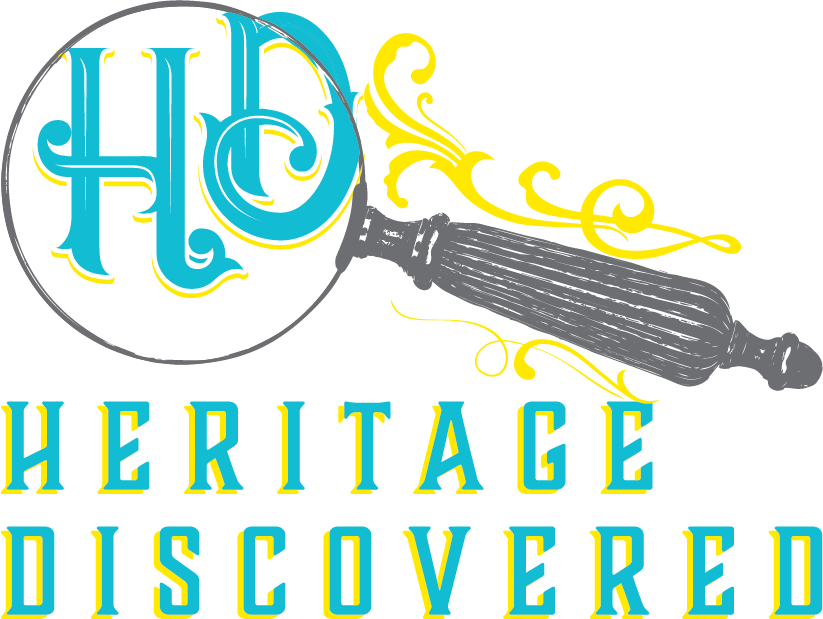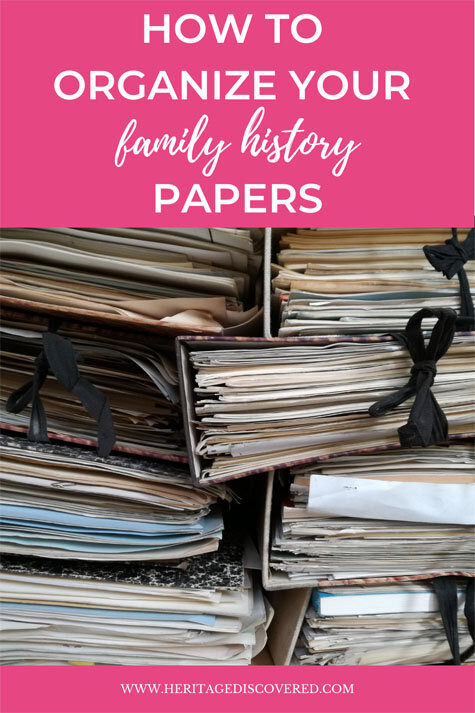How to Organize Your Genealogy Files With Binders
*This post may have affiliate links, which means I may receive commissions if you choose to purchase through links I provide (at no extra cost to you). All opinions remain my own.
Post updated July 29, 2022
In this post
Ways to organize your genealogy binders
Genealogy File Organization Systems
Chances are you have at least some paper files in your genealogy records. You can’t avoid it, even in this day and age. Even more so if you’ve been researching your family tree for a long time since everything used to be paper based.
There are two basic systems for organizing your paper files – file folders and binders. Neither is right or wrong and they have different advantages and disadvantages.
Today, I’ll go over how to get started organizing your genealogy papers into binders.
Some advantages of using binders are that they’re portable and protect papers better. They’re easy to page through. If you drop them, everything doesn’t spill out.
A downside is that they can get very bulky. There’s also more involved – finding the right binder and section, putting the document in a sleeve or hole punching it, filing it, and putting it back on the shelf. The supplies may also get expensive, depending on how many binders you need.
Don’t get intimidated about getting organized, even if you have a lot of papers to go through! The more you sort through the papers and think through it, the clearer things will become.
How to organize genealogy binders
The first big step is to think about how you think you’ll look for information in your files.
Do you want papers together by surname? If so, maybe you want one big binder for each last name and then have divisions for each generation within that binder. Or, maybe you want to sort papers by record type for each surname (like all land records together, all obituaries, etc.).
Do you want everything for one or one family group (a couple and their children) all together?
Do you want to group by grandparents – your four ancestor lines - with everything for those four lines grouped together?
Then think through some of the details:
When do children get their own binders? When they marry?
Will records for wives be kept with their husband’s files or will they have their own binder? When will you store her records with his – after they marry or all her records?
Do you have records only for direct line ancestors, or also siblings? If you keep documents for siblings, where should they be kept – with their parents, or in their own binders?
Where will you keep papers that don’t relate to a person, like information about places they lived or print outs of forum discussions? Maybe you want a binder for these papers.
Will you sort records chronologically within the binder or does it not matter to you?
If you have pedigrees and family group sheets, where makes the most sense to keep those?
If you have a lot of papers, will having a table of contents or an index in each binder be helpful?
Another thing to consider is how to tell people with the same name apart. Along with their name, you can use the unique ID assigned to each person in your family tree software. You can also use one of the formal genealogical numbering systems. Ahnentafel is the most common. There are pros and cons to each system. For Ahnentafel, one challenge is it doesn’t allow for people outside your direct line, so any siblings wouldn’t have a number. But if you don’t trace anyone outside your direct line, this may not be a problem for you.
Binder organization supplies
The next step is to think about what supplies you need.
How much storage space can you devote to binders?
Will you just use a hole punch for the papers?
Will you use acid-free plastic sleeves, like these or these?
What size binders make sense? Bigger binders like these 3" ones obviously store more but can get heavy. 1.5 inch or 2 inch binders can still hold a lot without getting too heavy or bulky.
Do you want to color code binders by branch to visually sort them? This variety pack or this one would be helpful and come in fun colors.
You can use a laminator machine to laminate document copies. (Note: Do not laminate any original records or photos.)
Forms you may want to include are
- Table of contents
- Pedigree charts
- Family group sheets
- Research checklists
- Timelines
Related posts:
My genealogy binder organization system
I prefer binders over file folders for keeping my genealogy papers together. I also prefer a simple system.
I keep binders by surname and each generation is separated by dividers within a binder. Only direct male ancestors get their own section, and I keep everything from birth to death there. Their siblings’ papers stay with their parents. I keep any family group sheets with the male ancestor and his family.
I keep a pedigree chart for each line and a family group sheet for each couple and their kids.
I also keep a records checklist for each ancestor to track what documents I’ve already found.
For wives, all records before they marry stays with their parents. Marriage certificates and everything after they get married is filed with their husband. I keep a small binder for all other papers, like surname or locality research.
For people with the same name, I simply write “son of/daughter of so and so” on the divider. For me, that’s faster than looking up the tree software’s number and I don’t want to be cross-referencing things. I don’t keep papers in chronological order because I feel like it doesn’t take me that much time to flip through them. And I don’t use a table of contents or an index for now.
I also keep my papers in acid-free plastic sleeves, with documents on both sides to save space. The sleeves do add bulk and weight to the binders. But they protect the papers and help me flip through everything faster. Even if I’m storing just copies and not original records, I like protecting the papers.
I also keep maps, information about surnames and the area as relevant for each family. I file these in a separate section of the binder. You can add in things like cousin charts and other tools.
Final thoughts
Getting your papers organized is important and takes some initial planning. But don’t overthink it or get intimidated! Start small and experiment to see what works best for you. You don’t want to create a complicated system and buy a bunch of supplies and then realize you like sorting everything differently! The level of organization depends on your own preferences, how many papers you have, and how detailed you want to get in storing them.
You can try your new system only going forward with new research to see how you like it. Another option is to set up a binder with one or two generations of one branch to test if it works for you. Then keep adjusting it over time.
It’ll take you some time of testing things out to come up with a system that works best for you. Once you find it, be consistent! Stick to that method so you’ll always know where to find a document.
The key is to take your time and find a system that encourages you to use it!
Do you use binders to organize your genealogy papers? Please share any other tips in the comments!

